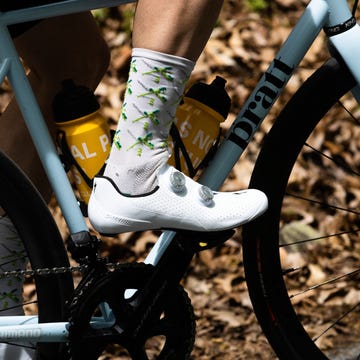For decades, ice has been the first line of defense in injury response. Take a spill? Pull out the frozen peas. Just hammered out 100 miles? Fill the tub, brace yourself, and polar plunge away. Now a growing number of scientists are cooling on ice therapy for muscle repair, citing evidence that inflammation is essential for speedy healing.
Researchers from Australia have added to this expanding body of research with a study comparing two groups of rats with deep-thigh muscle bruises. One group had their leg iced within 5 minutes of the injury for 20 minutes. The other received no ice treatment. When the researchers tested the rats three days later, the iced group indeed had less inflammation; but problematically, they also had lower levels of important markers indicating blood vessel formation and muscle regeneration than their non-iced peers. Similar research has questioned the use of non-steroidal anti-inflammatory drugs like ibuprofen for the same reason. Inflammation is a necessary part of the healing process. Squelch it and you risk slowing your recovery.
RELATED: Foods That Heal
Does that mean you should let every injury swell like a hot air balloon? “No,” says Philadelphia-based sports medicine expert Nicholas DiNubile, MD, author of Framework. “I don’t recommend ice for general muscle recovery. But not all swelling is productive,” he says. “If you’ve damaged a joint, like banging your knee in a spill, ice can not only help you manage the pain, but also curtail some of the initial swelling, so you can move the area again.” Mobilization is key to recovery, he says, and if swelling is keeping you from any movement, that’s not productive. If ice lets you move, you’ve gained something. “That’s not something you see in animal studies that look at muscle tissue in isolation.”
That’s why DiNubile will also use ice immediately, but only briefly, post surgery. “If healing injured or surgically repaired tissue is the goal, I might use ice initially to control pain, but then discontinue pretty quickly so I don’t interfere with the body’s healing response.” How do you know to ice or not to ice? Here’s a general guide:
The Injury: Exertional muscle soreness. You had a hard race or training ride, and you’re worried about walking tomorrow.
What to Do: No ice. Take in proper recovery nutrition. Have a gentle massage. Do some stretching. Perform easy aerobic activity the following day to help blood flow and muscle recovery. Use an electrical muscle stimulation device like a MarcPro, if available.
The Injury: Impact. You were on the bike, then the ground.
What to Do: Ice the sore area initially to prevent unnecessary swelling and bruising. Once home, elevate the area (higher than head or heart). Wrap it for compression. Perform gentle range of motion exercise.
The Injury: Sprain. You tried to put a foot down and your ankle rolled—and sprained.
What to Do: Ice initially to prevent significant swelling—but more importantly elevate the area (higher than head or heart). Wrap it for compression. Perform gentle range of motion exercise.
The Injury: Strain. The town-line sprint was a bit too much for your adductor and you pulled your groin.
What to Do: Ice only if needed to manage pain. Otherwise wrap for compression. Rest the affected area. Use an electrical muscle stimulation device like a MarcPro, if available. Perform gentle stretching in a few days.
Remember: When it doubt, get an injury checked out. Injuries of different severity can need different treatment. Working with a physical therapist or certified athletic trainer can help with recovery, with or without ice.














